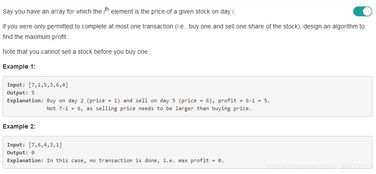Understanding the Basics of Online Stock Trading

Buying stocks online can be an exciting and potentially lucrative venture. Before diving into the world of online stock trading, it’s crucial to understand the basics. Stocks represent ownership in a company, and when you buy stocks, you’re essentially purchasing a small piece of that company.
Choosing a Brokerage Account

The first step in buying stocks online is to open a brokerage account. A brokerage account is where you’ll store your money and place your stock orders. There are numerous brokerage firms to choose from, each with its own set of fees, services, and tools. Some popular brokerage firms include TD Ameritrade, ETRADE, and Charles Schwab.
| Brokerage Firm | Minimum Deposit | Commissions | Platform Features |
|---|---|---|---|
| TD Ameritrade | $0 | $6.95 per trade | Thinkorswim platform, mobile app, research tools |
| ETRADE | $0 | $6.95 per trade | Power ETRADE platform, mobile app, research tools |
| Charles Schwab | $0 | $4.95 per trade | Schwab Mobile, StreetSmart Edge platform, research tools |
Researching Stocks

Once you have your brokerage account, it’s time to start researching stocks. There are several factors to consider when selecting a stock, including the company’s financial health, industry trends, and market conditions. You can use a variety of tools and resources to research stocks, such as financial websites, stock market apps, and brokerage firm research reports.
Understanding Order Types
When placing a stock order, you’ll need to understand the different types of orders available. The most common order types include market orders, limit orders, and stop orders. A market order is an order to buy or sell a stock at the current market price. A limit order is an order to buy or sell a stock at a specific price or better. A stop order is an order to buy or sell a stock when the price reaches a certain level.
Managing Your Portfolio
Once you’ve bought stocks, it’s important to manage your portfolio effectively. This involves monitoring your investments, rebalancing your portfolio, and staying informed about market trends and economic news. You can use your brokerage firm’s tools and resources to help you manage your portfolio, or you can seek the advice of a financial advisor.
Staying Informed
Staying informed about the stock market is crucial for successful online stock trading. This means keeping up with financial news, reading company earnings reports, and staying aware of economic indicators. You can subscribe to financial newsletters, follow stock market blogs, and listen to financial podcasts to stay informed.
Using Stop-Loss Orders
One of the most important strategies for managing risk in online stock trading is using stop-loss orders. A stop-loss order is an order to sell a stock when it reaches a certain price, helping to limit potential losses. It’s important to set stop-loss orders at a price that you’re comfortable with, and to review and adjust them as needed.
Long-Term vs. Short-Term Investing
When buying stocks online, you’ll need to decide whether you want to invest for the long term or the short term. Long-term investors typically hold their stocks for years, while short-term investors may buy and sell stocks within days or weeks. Each approach has its own risks and rewards, so it’s important to choose the strategy that aligns with your investment goals and risk tolerance.
Learning from Mistakes
No matter how experienced you are, it’s inevitable that you’ll make mistakes when buying stocks online. The key is to learn from these mistakes and use them as an opportunity to improve your trading skills. Keep a trading journal to track your investments and analyze your decisions, and don’t be afraid to ask for help from more experienced traders or financial advisors.
Conclusion
Buying stocks online can be a rewarding way to grow your wealth, but it



